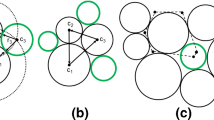Abstract
WHO II low grade glioma evolves inevitably to anaplastic transformation. Magnetic resonance imaging is a good non-invasive way to watch it, by hemodynamic and metabolic modifications, thanks to multinuclear spectroscopy 1H/31P. In this work we study a multi-scale minimal model of hemodynamics and metabolism applied to the study of gliomas. This mathematical analysis leads us to a fast-slow system. The control of the position of the stationary point brings to the concept of domain of viability. Starting from this system, the equations bring to light the parameters that push glioma cells out of their domain of viability. Four fundamental factors are highlighted. The first two are cerebral blood flow and the rate of lactate transport through monocarboxylate transporters, which must be reduced in order to push glioma out of its domain of viability. Another factor is the intra arterial lactate, which must be increased. The last factor is pH, indeed a decrease of intra cellular pH could interfere with glioma growth. These reflections suggest that these four parameters could lead to new therapeutic strategies for the management of low grade gliomas.





Similar content being viewed by others
References
Aubert A, Costalat R (2002) A model of the coupling between brain electrical activity, metabolism, and hemodynamics: application to the interpretation of functional neuroimaging. Neuroimage 17:1162–1181
Aubert A, Costalat R (2005) Interaction between astrocytes and neurons studied using a mathematical model of compartmentalized energy metabolism. J Cereb Blood Flow Metab 25:1476–1490
Aubert A, Costalat R, Magistretti PJ, Pellerin L (2005) Brain lactate kinetics: modeling evidence for neuronal lactate uptake upon activation. Proc Natl Acad Sci USA 102:16448–16453
Aubert A, Pellerin L, Magistretti PJ, Costalat R (2007) A coherent neurobiological framework for functional neuroimaging provided by a model integrating compartmentalized energy metabolism. Proc Natl Acad Sci USA 104:4188–4193
Chesler M (2003) Regulation and modulation of pH in the brain. Physiol Rev 83:1183–1221
Colen C, Shen Y, Mathupala SP et al (2011) Metabolic targeting of lactate efflux by malignant glioma inhibits invasiveness and induces necrosis: an in vivo study. Neoplasia 13:620–632
Garcia-Martin M, Hérigault G, Rémy C et al (2001) Mapping extracellular pH in rat brain gliomas in vivo by 1H magnetic resonance spectroscopic imaging: comparison with maps of metabolites. Cancer Res 61:6524–6531
Gladden L (2008) A “lactatic” perspective on metabolism. Med Sci Sports Exerc 40:477–485
Goodwin M, Harris J, Hernandez A, Gladden LB (2007) Blood lactate measurements and analysis during exercise: a guide for clinicians. J Diabetes Sci Technol 1:558–569
Guillevin R et al (2008) Proton magnetic resonance spectroscopy predicts proliferative activity in diffuse low-grade gliomas. J Neurooncol 87:181–187
Guillevin R, Menuel C, Vallée JN et al (2011) Mathematical modeling of energy metabolism and hemodynamics of WHO grade II gliomas using in vivo MR data. CR Biol 334:31–38
Law M, Oh S, Johnson G, Babb JS, Zagzag D, Golfinos J, Kelly PJ (2006) Perfusion magnetic resonance imaging predicts patient outcome as an adjunct to histopathology: a second reference standard in the surgical and nonsurgical treatment of low-grade gliomas. Neurosurgery 58:1099–1107 discussion 1099-1107
Mathupala SP, Parajuli P, Sloan AE (2004) Silencing of monocarboxylate transporters via small interfering ribonucleic acid inhibits glycolysis and induces cell death in malignant glioma: an in vitro study. Neurosurgery 55:1410–1419 discussion 1419
McLean LA, Roscoe J, Jorgensen N et al (2000) Malignant gliomas display altered pH regulation by NHE1 compared with nontransformed astrocytes. Am J Physiol Cell Physiol 278:C676–C688
Mohr JP, Wolf PA, Grotta JC et al (2011) Stroke: pathophysiology, diagnosis, and management. Elsevier Saunders, Philadelphia
Pellerin L, Magistretti PJ (1994) Glutamate uptake into astrocytes stimulates aerobic glycolysis: a mechanism coupling neuronal activity to glucose utilization. Proc Natl Acad Sci USA 91:10625–10629
Pellerin L, Magistretti PJ (2011) Sweet sixteen for ANLS. J Cereb Blood Flow Metab. doi:10.1038/jcbfm.2011.149
Terpstra M, Gruetter R, High WB et al (1998) Lactate turnover in rat glioma measured by in vivo nuclear magnetic resonance spectroscopy. Cancer Res 58:5083–5088
Valabrègue R, Aubert A, Burger J, Bittoun J, Costalat R (2003) Relation between cerebral blood flow and metabolism explained by a model of oxygen exchange. J Cereb Blood Flow Metab 23:536–545
Author information
Authors and Affiliations
Corresponding author
Rights and permissions
About this article
Cite this article
Lahutte-Auboin, M., Guillevin, R., Françoise, JP. et al. On a Minimal Model for Hemodynamics and Metabolism of Lactate: Application to Low Grade Glioma and Therapeutic Strategies. Acta Biotheor 61, 79–89 (2013). https://doi.org/10.1007/s10441-013-9174-8
Received:
Accepted:
Published:
Issue Date:
DOI: https://doi.org/10.1007/s10441-013-9174-8




